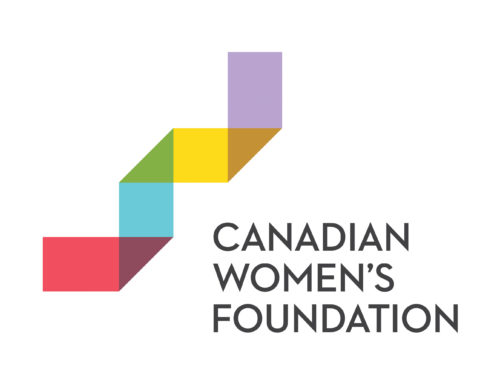In 2017, women changed the political landscape. Individually and collectively, women asserted their equality rights by publicly naming, shaming and demanding accountability for sexual harassment and sexual assault in the workplace.
As we mark the 16 Days of Global Activism Against Gender-Based Violence – the days from November’s International Day to Eliminate Violence Against Women to December’s International Human Rights Day – it’s a good opportunity to connect the dots between gender-based violence and the gender pay gap.
Gender-based violence can either occur at the workplace, or outside the workplace, but it may still resonate negatively in women’s work relationships. It’s time to recognize that providing real remedies to end gender-based violence will also help eliminate one of the drivers of women’s economic insecurity.
The “Silence Breakers”
Acclaimed as Time Magazine’s Person of the Year, the “Silence Breakers” of the #MeToo movement put the spotlight on how pervasive gender-based violence is for women in the workplace.
Again and again, women spoke out about how workplace cultures that normalize predatory sexual harassment, sexual assault, and toxic masculinity drove them out of their workplaces, and even out of their chosen fields of work.
Again and again, women spoke out about how enduring sexual harassment and assault became, in effect, a condition of employment; how failure to comply with sexual demands resulted in termination or a denial of employment opportunities or promotions.
Again and again, women spoke out about the physical, mental, and emotional toll that gendered violence, and abuse, has taken on them and their careers. While the focus has been on celebrities in the entertainment sector, these patterns of harassment and gender-based violence exist across all sectors of employment, in all industries.
Racialized women face particular backlash when raising complaints about sexual harassment and abuse. Working class women – particularly women in the restaurant industry and women working as cleaners in hotels – routinely face harassment by clients in the course of their work. Women entering male-dominated fields – whether it is policing, the military, construction, or tech– face cultures of toxic masculinity, harassment, and assault which target them for abuse.
Female-dominated jobs in the healthcare sector face the highest rates of workplace violence of all industries. According to 2012 statistics from Ontario’s Workplace Safety and Insurance Board, female-dominated healthcare jobs account for 31 per cent of all time lost due to workplace violence and client aggression in the province.
Gender discrimination and the pay gap
The gender pay gap is typically discussed in terms of how women’s work is paid less because it is devalued relative of men’s work. Women’s work is certainly devalued and underpaid in this way. And women face discriminatory barriers to accessing full-time and secure work, like a lack of affordable childcare, which contributes to their pay gap.
But gendered discrimination also prevents women from holding onto their work and their paycheques.
Gender-based violence and harassment in the workplace contribute to the gender pay gap because they drive women out of jobs, out of well-paid sectors, and close the door to promotion into better paying positions.
Gender-based violence in the workplace leads women to have interrupted work histories as they change jobs to escape abusive or toxic work environments. It reduces their earnings as they take medical leave to heal from the physical, mental and emotional injuries caused by harassment and violence.
All of this lowers women’s pay over the course of their careers.
Make no mistake: Gender-based violence and harassment is discrimination that is contrary to the law. That law is not new. And these experiences of discrimination are not new. What is new are the numbers in which women are coming forward and demanding change and redress. The question remains whether the legal system can and will deliver meaningful redress.
Violence at home, violence at work
At the same time, women facing intimate partner violence also see the effects of this gender-based violence on their paycheques.
A 2014 pan-Canadian study on intimate partner violence and its impacts at work revealed some staggering figures. The study, Can Work be Safe When Home is Not?, conducted by Western University and the Canadian Labour Congress, surveyed over 8,400 workers across Canada. It found that:
- Nearly 1/3 reported experiencing intimate partner violence;
- Indigenous women, women with disabilities and LGBTQ respondents were particularly likely to have experienced intimate partner violence; and
- More than 1/3 reported having at least one co-worker who was experiencing or had experienced intimate partner violence.
Of those respondents who indicated that they had personally experienced intimate partner violence:
- 53 per cent said the violence continued at the workplace (through the perpetrator calling, texting, emailing, stalking, showing up at the workplace and/or contacting employer or co-workers);
- 38 per cent reported it affected their ability to get to work;
- 82 per cent said it negatively affected their work performance;
- 60 per cent called in sick due to violence; and
- 8.5 per cent lost their jobs due to violence.
Another study showed that 30% of those who experienced intimate partner violence were afraid to either go to work or to leave work because of their partner’s behaviour. In addition, women often need to quit their jobs to escape violent partners who know their place of work. In turn, this interrupted work history can act as a barrier to future work.
In light of this reality that directly affects women in their jobs, unions have been leading the way by negotiating robust protections for paid and unpaid leave and supports for women experiencing intimate partner violence. The Canadian Labour Congress and various unions, including USW and Unifor, have developed guides on negotiating meaningful protection for workers experiencing intimate partner violence.
These guides include model language and strategies for negotiating provisions, such as proactive workplace training for managers; protocols for developing risk assessments and safety plans; support for counselling and other health resources; guidelines to protect a woman’s privacy so that information is disclosed only on a need to know basis; and provision of flexible work arrangements, advance pay, and other accommodations.
Provincial legislatures are also beginning to pass laws to provide leave and job protection for workers experiencing intimate partner violence. Manitoba passed the first legislation of this kind in 2016, providing 5 paid and 5 unpaid days leave, and a further 17-weeks unpaid leave period in any 52-week period so that those experiencing intimate partner violence can seek medical, legal, counselling, and other support for themselves and their children, have time to find new housing and to attend legal proceedings.
Fair workplaces for the future
Last month, as part of Bill 148 – the Fair Workplaces Better Jobs Act, 2017 – Ontario also introduced similar protection for workers if they or their children experience domestic or sexual violence or the threat of domestic or sexual violence. Effective January 1st, 2018, workers in Ontario who have worked for an employer for 13 weeks will be entitled to 5 paid and 5 unpaid days leave and a further 15 weeks unpaid leave in a calendar year to seek medical, legal, counselling, and other support for themselves and their children, have time to find new housing and to attend legal proceedings.
These are important advances for women and they mark real change because they draw a direct link between gender-based violence and women’s economic security.
They deepen how we think about the gender pay gap. And they provide a basis for alliances and solidarity across movements – labour and worker movements and anti-violence movements – to build real security for women.
Fay Faraday is a labour, human rights and constitutional lawyer at Faraday Law in Toronto. She is the co-chair of the Ontario Equal Pay Coalition.







